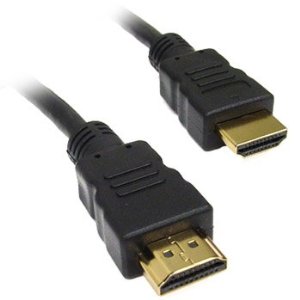HDMI 1.3
An HDMI 1.3 b cable is definitely what you need when looking for cables you can use for you new TV. As our lives advance, we no longer rely with the use of analogue three cables that were basically yellow for vide and red and white for audio. Due to the confusion it brings to the user in wire connection, there are many manufacturing companies who designed cables to be easier to use and minimizes clutter that naturally occurs in three cables. Now, we have the HDMI single cable that answers simple and less cluttered digital connection. Various HDMI reviews came out regarding the efficiency of HDMI 1.3 for it offers many other benefits that you can discover as soon as you start using them.
If you are unsatisfied with the color and sound quality that the cable you are using offers, it is about time to switch into this HDMI cable. The separate audio and video feed makes you stay away from use of the single co-axial RF to three cables. HDMI 1.3 allows you to enjoy better your home entertainment system. This is the only thing that maximizes spaces as well as promotes orderliness at home for you will no longer with many cables that are sometimes prone to accident. Aside from these benefits, this cable is also capable of carrying signal quality that you can you can expect it would really provide better viewing and listening experience you never had before with your traditional cable. The connection is simple, there are no many cables require in order for them to be connected on your device. This is the real proof of plug and play connection.
This is definitely the kind of connection that you would want your entertainment system given the fact that it offers many benefits you cannot find with other cables. Get yourself acquainted with these products by reading HDMI reviews that gives cutting edge information on different HDMI cables and cords.
Tagged: HDMI 1.3, HTML, HTML Cables
Got something to say? Click here to reply




Can you provide (or ink to) a table with bit-rates for the various cables on the market? Also, please explain the “inside the wall” rating and when it is/isn’t necessary or beneficial.